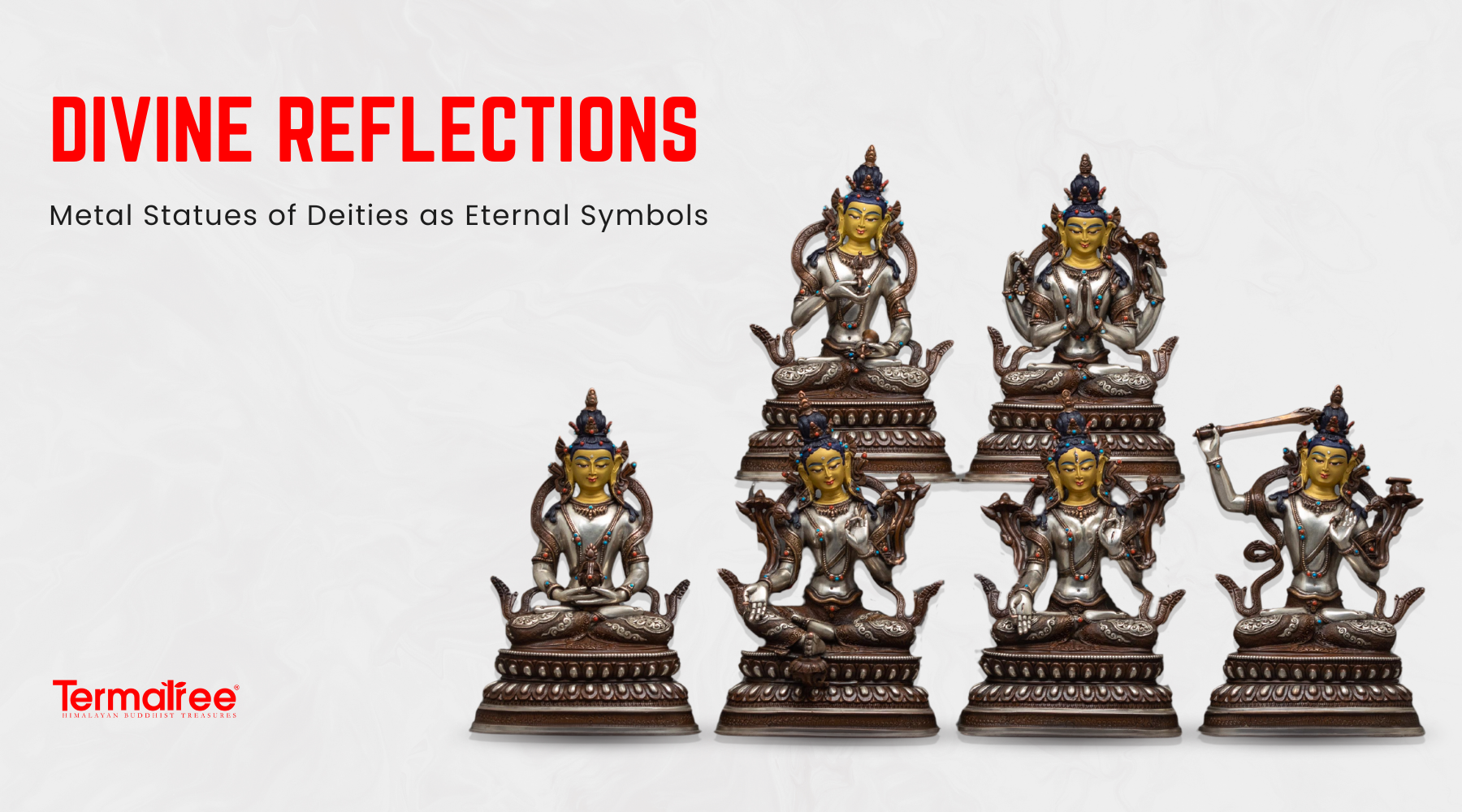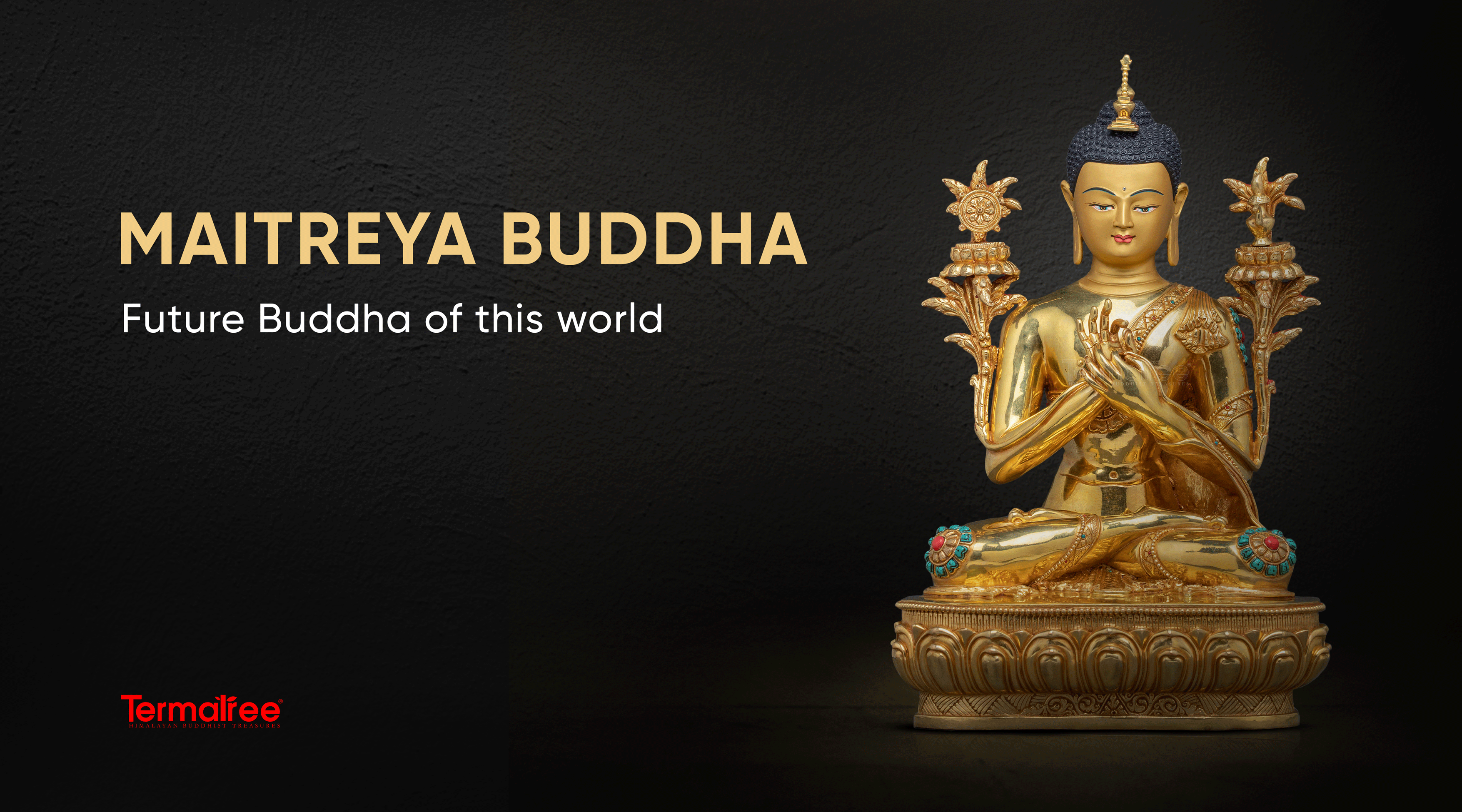Bridging Faith, Art, and Eternity Through the Timeless Medium of Metal
The statues of the gods are revered symbols of faith and devotion that embody the spiritual essence and beliefs of the communities that produced them. These divine beings are made of enduring metals such as bronze, copper, silver, and gold, and they represent the eternal bond between the material and spiritual realms. Every metal has its spiritual meaning. For example, bronze represents power and stamina, copper represents purity and healing, silver represents enlightenment and intuition, and gold represents divinity and eternal life. These sculptures relate humans and gods at temples, shrines, and holy landscapes across the globe. They depict the most significant spiritual values of society. It is an indication of strong faith to create an eternal deity in metal. It asserts that the divine is everlasting, and the virtues portrayed by these characters will assist individuals over the years. Statues made from metals tell a story about faith, art, and hopes for the future when it comes to their physicality and forms that connect heaven and earth.
Cultural Reflections in Metal Deities

The reflection of a culture can be found in images of deities and divinity in metal statues. As a reflective surface, metal statues can tell us something about the people who make them, including their religious piety as well as their moral values and social dreams.
For example, gilded or bronze statues of gods and goddesses, such as Vishnu, Shiva, and Durga, are accepted representations of cosmic order, power, and protection. Those statues communicate to devotees the concept of divine power and the values of heroism, duty, and compassion in their culture. In the context of Buddhism, bronze Buddhas represent peace, enlightenment, and self-examination. The calm expression of Buddhas evokes the religious aspirations of believers, but the enduring properties of metal also imply that these aspirations will endure through the generations. Finally, in Christianity, silver- or gold-plated statues of saints and angels symbolize purity, sacrifice, and guidance. They help believers feel the presence of God in sacred realms. Thus far, we have seen that metal statues of deities are never merely objects of worship, but also mirrors of culture, demonstrating what societies value, celebrate, and hope to pass down to the next generation.
Explore Our Collection of Gold-Plated Statues from Termatree.
Metal and the Sacred: A Union of Meaning and Matter
Metal, once considered a divine material, has been used in the statues of deities for its strength and ability to create detailed shapes. The spiritual significance of the various types of metals will impact the way people see God and their relationship to God. The primary metals used in god statues are shown in the table below.
|
Metal |
Symbolism |
Everyday Use in Deity Statues |
Spiritual Significance |
|
Bronze |
Strength, stability, and durability |
Deities that stand for safety, wisdom, and strength |
Provides strength and long-lasting advice |
|
Copper |
Brightness, cleanliness, and life |
Gods and goddesses who are connected to life, energy, and healing |
Shows warmth, spiritual light, and caring energies |
|
Silver |
Clear thinking, reflection, and intuition |
Deities that inspire thought and give advice |
Encourages self-reflection, which connects worshippers with God's wisdom. |
|
Gold |
Eternal light, immortality, and plenty |
Most respected gods, signs of the highest divinity |
Raises the figure to eternal holiness, which stands for God's presence |
Sculptors use metal to create deity statues, imbuing them with spiritual essence and building a bridge between the divine and humans. These statues serve as enduring reflections of faith, culture, and spirituality, preserving sacred values for generations.
The Craft of Immortality

Creating a metallic representation of a deity is an act of devotion, artistry, as well as a technical skill. The initial step is determining the proper metal based on its physical and symbolic properties. The metal is conceived, carefully cast, and then melted down. With each act, one takes a raw metal and eventually transmutes it to a sacred object, converting something mundane into something spiritual. The spiritual path to the God of Metal is, more or less, the same process of cultivating inner virtues, enriching the personhood, and establishing communication with the deity.
The durability of metal represents God's eternal being. Metal does, however, endure over time, through weather, and through human handling, upholding the deity's presence, present for the generations. Even after a hundred years, the worshipper similarly feels the same awe, guidance, and spiritual connectedness as in the formation. In this sense, metal statues create a focus of devotion on the real, the enduring, and become a transitory space between the worshipper and God in time.
Explore Our Collection of Bronze Statues From Termatree.
Historical Context: The Old Processes and Roles in Transition
The existence of statues of metal deities is long and interesting, arriving at us through quite imaginative artistic techniques that merge art and the religious experience. Lost-wax casting has been around since at least 2000 BCE. This is a process in which an elaborate wax model of the god is created, mounted, and covered with clay or another non-melting substance, and the whole thing is then placed in the furnace to melt the wax. Once melted, the artist poured molten metal such as bronze, copper, or gold into the mold and created a perfectly articulated statue that would stand the test of time. This process allowed artists to create not only the physical form of the deity, but also subtle expressions, delicate ornaments, and symbolic gestures. This made the divine figure not only very realistic but also a powerful spiritual force.
The other technique was repoussé, whereby the sheets of metal were hammered from behind to create designs on the front. The technique allowed big, light statues or panels to be made with intricate details, and knowledge of both metalworking and art composition has been gained.
The metal deity statues evolved with society. Anciently, people could find statues in temples or in public, and these demonstrated the gods following people, which helped in keeping order in society and in politics. Saints became more of a personal religious practice, and these statues took the road to the home and smaller shrines, where they became important for worship. They did not just represent the divine but represented a physical connection to the spiritual ideal in which they worshipped. This illustrates the way religious artworks have evolved to suit the needs of people in the course of time.
Mirrors of Faith and Thought

The god's statues are literal reflections, not figurative. The smooth faces of the statues literally reflect that of the people who come to pray, meditate, or ask for help, so the experience is personal and engaging. This reflection gives worshipers a reminder of not only their need for physical sustenance but also of their spiritual intentions and struggles, and the lofty ideals the divinity embodies.
The gleaming metals act as a bridge between the earth and heaven, raising worshippers' awareness of their rationale in the cosmos, and creating an affiliation with something eternal.
Within these statues are the values, beliefs, and creative vision of the people who crafted them. They impart to us an understanding of the moral and cultural systems of society. Every curve, every motion, and every aspect narrates a story of devotion, artistry, and the wishes and aspirations of a particular people. The completed physical idol combines material and meaning, human devotion, and god. Each interaction is personal and transcendent as reflections, reverence, and inspiration meld, reminding people of their eternal longing for the sacred.
Explore Our Collection of Copper Statue From Termatree.
Philosophical Inquiry: The Physical Imaginings of the Divine
Metal statues of deities embody such attributes as eternality, compassion, knowledge, and protection, which humanity naturally relates to the divine. The metals, with their permanence, used to create the statues, become philosophically significant because they evoke the irony of the earthly notion of permanence, reinforcing the notion of God as both eternal and unchanging. The permanence of the metal scripture allows devotees to see and experience the divine encounter throughout generations of people, which stands as a testament to the permanence of metal.
An embodied expression of the divine can engage participants not solely in an experience of beauty but in an experience of moral thought and spirituality. The figure serves as a space to reflect on human values and aspirations. Human metal statues translate spirituality, forming a middle space between human desires and the actions of God, manifesting the intertwining of matter and meaning. This factor makes metal statues a compelling medium for communities of worship to engage in the divine throughout generations.
Recent Interpretations: Evolving Worship in Contemporary Society

Metal deity representations are still relevant today, although some of their forms and meanings have been adapted to align with the attitudes and values of our time. Contemporary artists are engaging in a dialogue with the past by using a range of metals, alloys, and finishes, such as stainless steel and titanium, or multiple metals, to create their devotional representations in ways that are, conceptually, present-day yet steeped in the tradition of metalwork. Deity representations in metal have moved beyond our temples or shrines. They now exist in museums, as public art, and even digitally, which makes spirituality part of everyday life. People who interact with deity representations today may have a different and potentially more personal approach to meditation - using them for inspiration, mindfulness, and morality instead of tools for worship as part of ritual practices.
Additionally, the modern take is examining social or environmental questions—the persistence of metal indicates some form of strength, responsibility, or connection with nature. This is how metal deity representations continually provide connectedness with human divinity. They continue to evolve and, at the same time, are based on the human search for meaning.
Explore Our Collection of Silver Statues From Termatree,
Conclusion: Lasting Icons of Faith and Humanity
Metal deities are living symbols of faith, culture, and human aspirations - they are much more than an artwork. Ancient temples and modern art galleries both have long created a mirror for the spiritual beliefs, ethical values, and artistic skills of the cultures that have made them. The choice of metal as the medium - bronze, copper, silver, gold, or contemporary alloys - also carries a particular and unique meaning to that statue. Even the methods by which the makers created the statue, such as lost wax casting or repoussage, signal the seriousness of purpose from the makers to the craft and from the makers to the spirit.
These statues are much more than things; they attach our material reality to the eternal and challenge us to question, to pray, and to learn about our role in the Universe. Whether we are challenged to wonder at an ancient shrine or in a contemporary installation in the city, it is these objects of art and worship that still fascinate us with our spiritual beings, challenge our moral being, and add us to yet another continuum of the search for the sacred.





